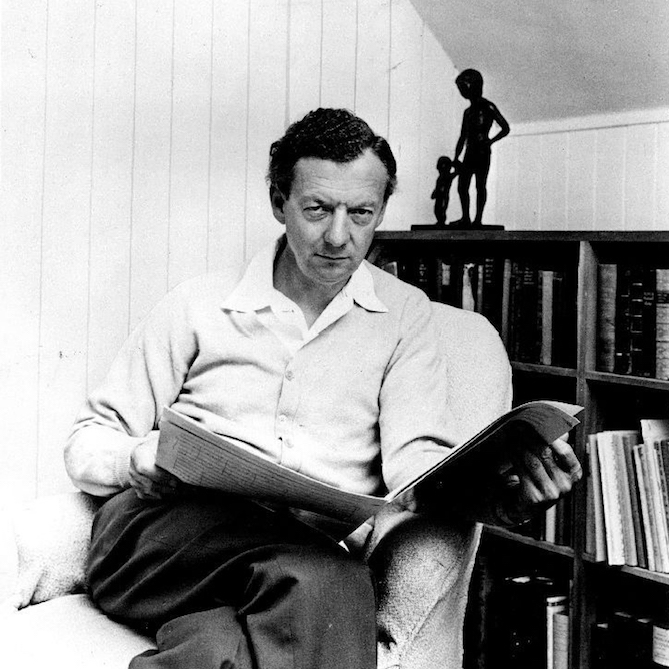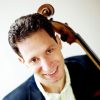
The Britten Cello Suites (Part 5): An Interview with Steven Isserlis
Aron Zelkowicz
Your 1992 recording of Britten’s Third Suite is widely known, due to its pairing with John Tavener’s “The Protecting Veil” (which has been called a “cult” recording). Do you have any approximate idea of how many copies that album has sold?
I don’t know—quite a few, anyway. I wonder how many people have listened to the Britten, though! There’s another connection: the very first time I went to see John Tavener with my cello, I played him the passage in the coda of the Britten where the cello breaks into a chordal version of the chant for the dead—like a Russian Orthodox choir. I remember him saying how wonderful that music sounded on the cello. Much later, John heard me play the whole suite, and—rather to my surprise, because it was so different from his style—he loved the work.
The Britten and Tavener works make for obvious companions because they are both based on or inspired by Russian Orthodox liturgy. Did you have much of a history with Britten’s Third Suite before choosing to record it with the Protecting Veil? Can you talk about your first occasion for learning or performing the suite?
I was lucky enough to be at the premiere of the Third Suite at the Snape Maltings—with Britten sitting in the box. I’ve played the suite in that same hall several times since, and each time have glanced into the darkened box, and wondered whether Britten’s ghost is sitting there! I don’t remember much about the first performance, if I’m honest—just that it was an exciting concert, which began with Rostropovich striding out onto the stage, sitting down and immediately and loudly launching into the third Bach suite. We jumped! Perhaps having been at the premiere contributes to my love of the work. I’ve never learnt the first or second suites, because I haven’t felt the same attraction to them, brilliant though they are. With the Third Suite, I feel that the music comes from deep within Britten—it is his meditation on death.
You performed Britten’s Cello Symphony with the dedicatee, Rostropovich, conducting. Did he share any insights about Britten, the music or the man, that you found helpful?
I don’t remember talking with him about the suites; but we talked a bit about Britten the man, and the fun he had mis-translating for him when they were in Russia together, trying to make him laugh during formal speeches of welcome. Most interesting for me that week in San Francisco, though, were the times when before each performance of the Cello Symphony (there were four, I think) Slava came and gave me “notes” from the night before. I tried to incorporate everything he said into the performance that night. He was spot on in every point—of course!
The Third Suite concludes with the Kontakion: the Russian Orthodox prayer for the dead. Britten provides an alternative ossia with a B-flat instead of a B-natural, which he takes pains in the score to explain was the version familiar to Shostakovich, and players can “choose whichever they prefer.” This seems completely bizarre to me, because the entire suite is based on interlocking minor thirds and the half step created by B natural in the final key of C minor. To change the Kontakion to Shostakovich’s version would spoil the whole effect of the reverse variations. Have you been able to make any sense of this?
Well, I think that what happened was this: Britten played the Third Suite on the piano to Shostakovich at the British embassy in Moscow. At the end, Shostakovich happened to mention that he was used to a different version of the chant for the dead. According to the cellist Liza Wilson, who was there (her father was the British ambassador to the Soviet Union), Britten was pretty devastated—not surprisingly, since he’d built the whole piece around the version he knew. But he obviously felt that he should offer Shostakovich’s version as an ossia. I’ve never heard anyone play it, though.
Speaking of multiple versions, the entire first movement (Introduzione) was originally much different than the version we now hear. Looking at the pencil manuscript, it replaces the simple monophonic chant with many dissonant double stops. Moreover, it again alters the minor-third intervallic fingerprint of the suite. Your musical sleuthing has led you to record such obscure artifacts as the original endings of the Dvorák and Schumann concertos. You’ve said that these first drafts help us better understand or appreciate the final result. So what do you make of Britten’s departure from this original Introduzione?
That’s very interesting! I hadn’t seen it—at least, not that I remember. Good to see it, though I do prefer the printed version—it’s so moving.
What about the fact that the whole suite is so tightly composed, yet the G-sharp/A-flat muddies the theme?
I wouldn’t say that it was tightly composed! It’s a very freely written piece—almost improvisations around the four themes, I think. That’s somehow what gives the work its almost mystic power.
Britten adds an alternative to the first seven bars, which was reprinted by a copyist as late as three years after he wrote the rest of the piece, in January 1974. Again, what do you make of this? Do you think it would make for a worthwhile “bonus track” on a CD?
Well, I’m always interested in shavings from a master’s workbench. Anything Britten wrote would be worth hearing! Even his juvenalia: I recently gave the first performance (I think) of a sonata he wrote when he was twelve years old. Of course, it’s no masterpiece—but it’s impressive for a twelve-year-old, to put it mildly. A friend of mine commented after the performance that Britten would probably have been delighted to have it performed when he’d just written it; furious if it had been performed some ten or twenty years later; and again pleased and amused if he’d heard it in his old age. It’s charming. And also, I love the Sacher Thema: so monumentally powerful—a fitting farewell to the cello.
Steven Isserlis’ tributes to John Tavener can be found here.
Subjects: Interviews, Repertoire
Tags: Aron, Britten, Britten Cello Suites, Britten Cello Symphony, cello, cellobello, chant, conducting, improvisation, interview, Introduzione, Isserlis, manuscript, multiple versions, performance, premiere, recording, Rostropovich, Russian Orthodox Liturgy, Shostakovich, Sonata, Steven, Tavener, third suite, Zelkowicz
